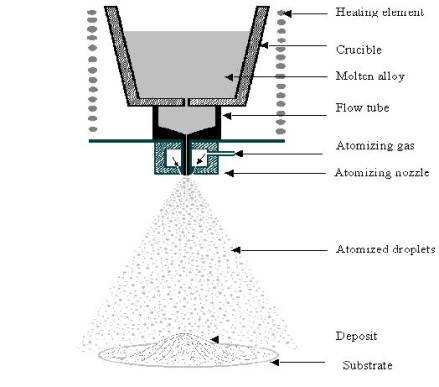|
SPRAY FORMING |
|
|
|
Spray deposition and atomization technology is gaining wide acceptance as a cost effective manufacturing route for near net-shape preforms with the advantages of rapid solidification processing. In the present investigation, pressure, velocity, density and temperature profiles inside the nozzle and its outlet have been predicted using numerical techniques. Compressible Navier-Stokes equations for axi-symmetric case have been solved for the entire domain of the nozzle using FluentTM 6.0 software. The nozzle design chosen is the same as the one used for spray forming. Stagnation and static pressures were measured with the help of a pitot tube for three experimental conditions of spray forming. These pressures were used to predict the state of the atomizing gas in the above model. The state parameters of atomizing gas at the nozzle outlet are also compared with those obtained from the standard equations used for quasi one-dimensional flow. Spray deposition was carried out with optimized processing parameters and the spray deposits successfully obtained were further characterized. The macro analysis of the deposits suggests that during atomization, if the overall liquid amount is higher than the optimum amount in the atomized droplets, it would produce surface cracks and large amount of porosity in the deposit. An increase in atomization gas pressure increased the melt flow rate and yield. The powder size distribution and microstructure of the overspray powder was studied. The powder size showed a wide range of distribution, 10 to 500 μm, and the amount of fine powder increased with increasing atomization gas pressure. The porosity distribution analysed by ultrasonic C-scan was corroborated by the density measurements using Archimedes principle. More work is in progress in this direction. |
|
For further details or queries or publication related to this, kindly contact us at the address given on the web-site. |
